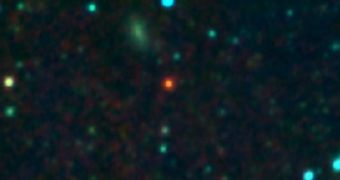Peeking further into the Universe also means peeking further into the past. The further you go the further it is to see anything, due to redshift and to the fact that there's a lot more to get in the way.
Luckily, scientists aren't limited by what their eyes are capable of seeing and go way beyond that.
Scientists at the University of Cambridge have been using infrared imaging to go back 11 billion years, at the edge space and time.
Their studies have discovered several objects that were undetectable in visible light among them several supermassive black holes, some of the biggest ever observed.
"Most black holes of this kind are seen through the matter they drag in. As the neighbouring material spirals in towards the black holes, it heats up. Astronomers are able to see this radiation and observe these systems," Dr. Manda Banerji, one of the scientists involved and lead author of the paper said.
"Although these black holes have been studied for some time, the new results indicate that some of the most massive ones may have so far been hidden from our view," she added.
One of these supermassive black holes, ULASJ1234+0907, is 11 billion light years away, and is part of the early universe.
It weighs in at 10 billion solar masses, which would make it 10,000 times heavier than our very own, local supermassive black hole at the center of the Milky Way. This would make it one of the biggest supermassive black holes ever discovered.
These early black holes were expanding rapidly in the early universe and interacting violently with the galaxies around them.
But, because of the large amounts of dust surrounding them, visible light is unable to reach us from that far, which is where the UK Infrared Telescope comes in.

 14 DAY TRIAL //
14 DAY TRIAL //